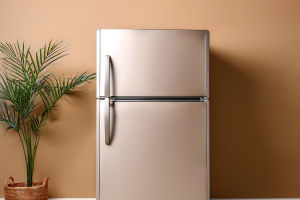When it comes to healthy eating, it's not just what you eat—it's how much. For many Lykkers, mastering portion control is the key to feeling energized, avoiding overindulgence, and keeping nutrition in balance without giving up foods you love.
In this guide, we'll break down simple, practical tips to help you serve just the right amount. You'll discover how visual cues, plate habits, and smart routines can make a real difference—without the need for a measuring cup at every meal.
Whether you're eating out or cooking at home, this guide keeps things doable and real.
Getting to Know Your Portions
Before you can manage your portions, it helps to understand what they look like. Spoiler: it's not about tiny meals or giving up your favorites. It's about being aware, thoughtful, and making space for balance in every bite.
Use Your Hands as a Guide
Your hands are surprisingly accurate tools. They're sized to you and always on hand (literally).
A palm-sized portion of protein
A fist-sized serving of vegetables
A cupped hand of whole grains or carbs
A thumb's worth of oils or spreads
As registered dietitian Abbey Sharp shares, "You don't need to weigh your food to make a healthy choice. Your hand gives you a personalized portion size every time."
This method is especially helpful when eating out or at a friend's house where serving sizes aren't labeled.
The Smaller Plate Trick
Studies have shown that simply switching to a smaller plate or bowl can help you eat less without even noticing. That's because your brain loves visual cues—when your plate looks full, your brain registers satisfaction.
Nutrition expert Dr. Brian Wansink, known for his research on eating behavior, explains: "Portion size can sneak up on you. A smaller plate leads to smaller portions, which still feel generous."
Try using a salad plate for your main meal or a small bowl for snacks—you might be surprised at how full you feel with less.
Mindful Habits That Stick
Once you get a sense of what the right portions look like, it's all about building smart, easy habits. Here's how to make portion control part of your lifestyle—not just another rule to follow.
Slow Down and Check In
When you eat slowly, your brain has time to catch up with your stomach. Most of the time, you're full long before your plate is empty—but you won't know that if you’re rushing through a meal.
Try this: Put down your fork between bites, chew a little longer, and enjoy the textures. Halfway through your plate, ask yourself if you're still hungry or just finishing out of habit.
Dietitian Keri Glassman suggests, "Give yourself 15 minutes before going back for seconds. Often, you'll realize you didn't need more—just more time."
Plan Snacks Before Hunger Hits
Portion control isn't just for main meals. It's especially helpful when it comes to snacks—those quiet moments when a quick bite turns into a handful... or five.
Pre-portion your snacks ahead of time. Instead of eating from a big bag, take a small amount, put it on a plate or napkin, and step away from the rest.
Better yet, mix satisfying snacks that offer a balance—like a small apple with a spoonful of peanut butter or some whole-grain crackers with hummus. You get both energy and satisfaction in one go.
Portion control doesn't mean you need to eat less of everything. It means tuning in to what your body actually needs, using simple visual guides, and building habits that support your health—without making food feel like a chore.
With a little awareness and a few tricks, you'll feel more in control of your meals, more connected to your hunger signals, and more confident in your choices.
So Lykkers, the next time you sit down to eat, remember: a smaller portion can bring bigger benefits. Keep it mindful, satisfying, and always enjoyable.


